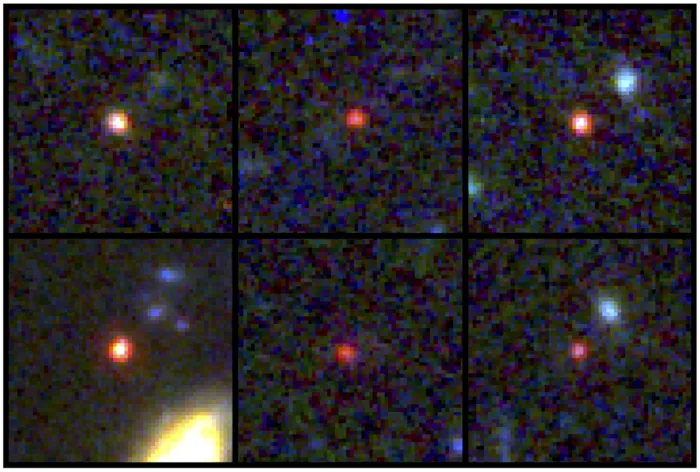In the dark outskirts of one of the James Webb Space Telescope’s newest images creeps an ancient celestial body—a galaxy dating back 13.5 billion years ago. Our universe itself is thought to be 13.8 billion years old, making this the youngest, fully formed galaxy ever discovered.
While this may not sound like big news, it is an astounding discovery, as this galaxy is too old to have existed based on its observed size and density in images gathered by the James Webb Space Telescope (JWST), pointing at the fact that some element in our current understanding of the universe’s age is flawed.
The basis for this mind-boggling discovery was the use of redshift, an idea stating that the closer an object moves to something, the bluer it appears, and the farther it moves away, the redder it becomes (demonstrated by Fig 1). This idea essentially means that when we look at distant objects in space, we are actually observing them from many years ago, as it takes light hundreds if not thousands or even billions of years to travel to us!

To better understand this, imagine light as a piece of mail. Letters tend to take a few weeks to be received by their recipients and, by the time they arrive, the information is likely outdated. Because light obeys this principle, with this information we are able to peer into the early stages of the cosmos’ development, and also discern the age of the universe. With this knowledge in hand, scientists constructed, what seemed at the time a fairly reliable model referred to as -CDM, CDM standing for cold dark matter. Essentially, this theory is the idea that dark matter—a mysterious mass that comprises a large amount of our universe—formed into clumps as the universe cooled after its creation. Regular matter began to gather around those clumps, forming celestial bodies like galaxies. (lambda), here, represents the expansion of the universe. Thinking back to redshift, this means that as the universe grows, objects become more distant from one another, redshifting their light.
Originally, -CDM was compatible with the data available, but recently, our two main methods of measuring the universe’s expansion have begun diverging from each other. This is further confused by the discovery of the previously mentioned impossibly old galaxy. It is within these faults that new ideas have prevailed, and a new model of the universe formed.
Essentially, the new hybrid model, as it is currently referred to, believes that many of the variables used when calculating redshift are off due to a misunderstanding of how quickly the universe is expanding, but also because of the age-old theory of tired light. As light travels, it is stretched out and redshifted—fabricating the illusion that the light perceived is older. This is the idea of tired light.
Combining the theories of an expanding universe and tired light, a team led by Rajendra Gupta found that their newly made hybrid model would allow for the existence of a galaxy as old as the one discovered. But this comes with a significant consequence: it raises the age of our universe to 26.7 billion years old, vastly increasing the age and scale of our universe. This is a revolutionary theory that may open the door to a plethora of new discoveries and flip our current understanding of the universe on its heads, adding to the treasure trove the JWST has been thus far. But it still isn’t perfect. There are, of course, a few flaws—the observed galaxies are images and don’t contain spectra or further analysis, and data gathered on the light they emit may also be faulty due to machine and man-made errors.
Nonetheless, this proposal has a great deal of potential, marking the beginning of JWST’s quest to revolutionize our comprehension of the cosmos. With ongoing advancements in instrumentation and technology, our ability to fathom the vast expanse of the universe will only continue to expand—ushering in an understanding of how the mysterious world around us really functions.


